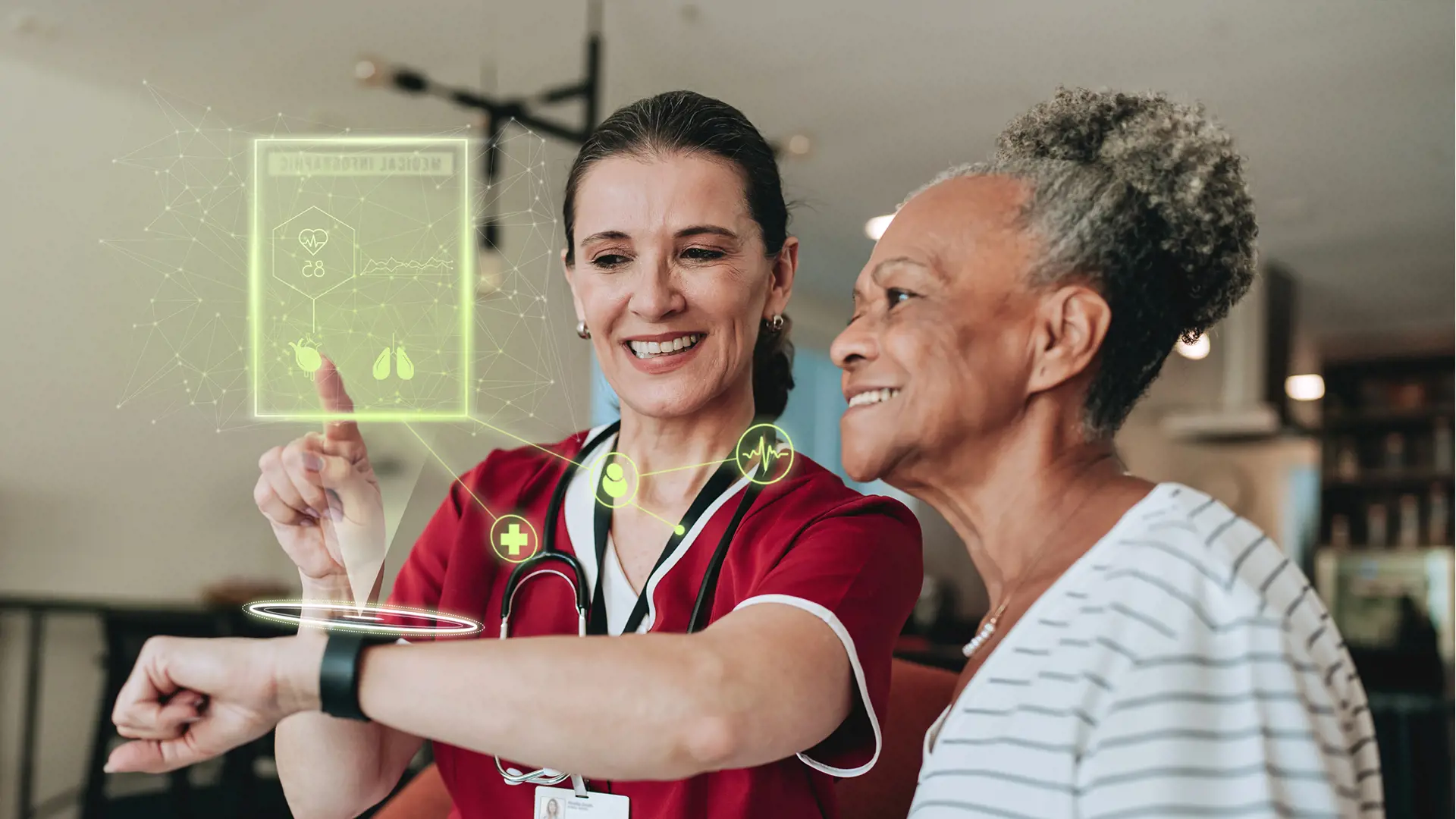
by C. L. Stambush
WHEN IT COMES to improving healthcare, collaboration is key, and artificial intelligence (AI) and machine learning (ML) are the tools to unlock it. With the future in mind, USI's Bronstein Center for Healthy Aging and Wellness collaborated with Dr. Ryan Integlia, Associate Professor of Electrical and Computer Engineering, to explore ways AI can be employed to bridge a looming healthcare divide. "There is a growing need for assistance among the aging population, while the number of people available to help is declining, creating a significant gap," says Integlia, who serves as lead faculty for the AI Work Group in the Pott College of Science, Engineering, and Education.
Seeking to help close the divide, Integlia proposed a two-day intensive course during the Summer 2024 Semester, designed to bring engineering and healthcare professionals together. The course, which was repeated in the Spring 2025 Semester as a full semester course, focused on how AI technologies can enhance diagnostic accuracy, optimize patient care and support healthcare providers in delivering more personalized and efficient services. "By integrating digital incentives, patient-aware edge* devices and practitioner engagement, I aim to enhance patient participation and improve clinical outcomes," says Integlia.
The course—Applications of Artificial Intelligence/ Machine Learning in Healthcare—was supported as an initiative of the Bronstein Foundation. Complementing the course, Integlia is working closely with one arm of the USI Geriatric Workforce Enhancement Program (GWEP), a $5 million grant from the Health Resources and Services Administration of the U.S. Department of Health and Human Services in 2024, to support integrating AI in nursing homes.
"Academic partnerships such as USI's gerontology and engineering programs, were the focus of a concurrent session at the Gerontology Society of America's annual meeting," said Dr. Katie Ehlman, Professor of Gerontology and Director of the Bronstein Center for Healthy Aging and Wellness, noting USI may be one of only a small number of universities collaborating in this space.
Out of the course collaboration between engineering and health professions, a range of projects providing practical outcomes have been explored, from wearable devices for fall detection, to using algorithms to analyze certain types of data in the healthcare setting, to using robotics, augmented reality (AR) and extended reality (XR) devices to combat loneliness. Integlia has introduced engineering students into the Bronstein Center and established a volunteer mentorship group of young professionals and mid-career professionals from across the country to provide expert advice on the projects. "The mentors discussed image processing, robotics, AI and ML applications, as well as their experience in the industry, developing applications and more," says Integlia.
There are plans to introduce additional courses on AI, computer vision, and robotics, to bridge disciplines within the Kinney College of Nursing and Health Professions and the Pott College of Science, Engineering, and Education and have a larger impact on the University, Integlia says. "The goal is to bridge the digital and AI divide, making technology accessible to everyone, including students, faculty, staff and the community."
* Edge computing processes data locally on medical devices rather than sending data to a remote data center.
